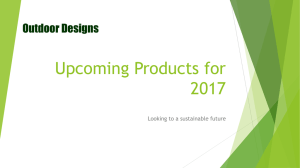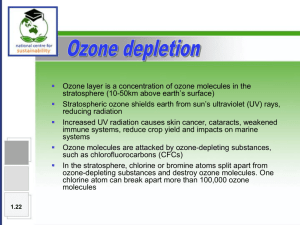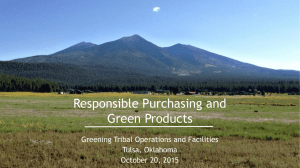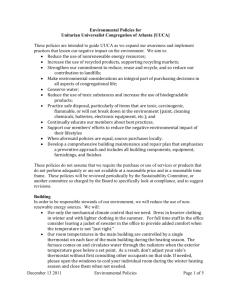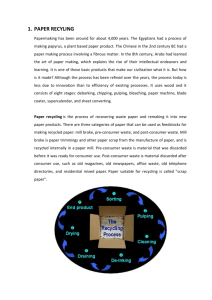Chapter 4 Notes
advertisement
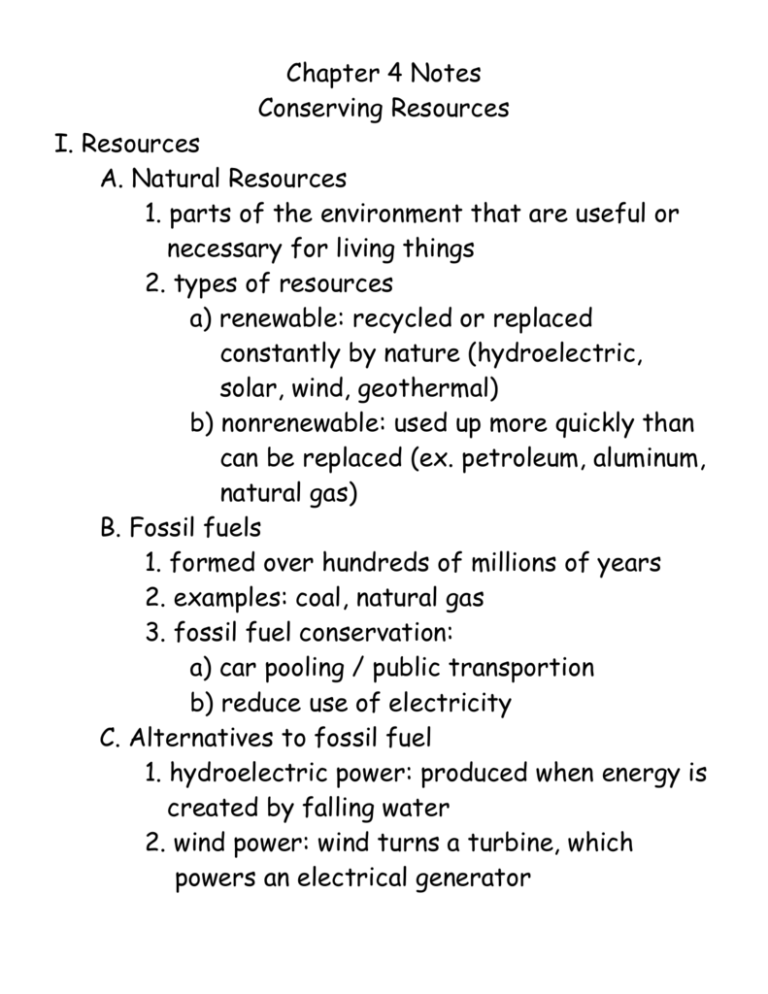
Chapter 4 Notes Conserving Resources I. Resources A. Natural Resources 1. parts of the environment that are useful or necessary for living things 2. types of resources a) renewable: recycled or replaced constantly by nature (hydroelectric, solar, wind, geothermal) b) nonrenewable: used up more quickly than can be replaced (ex. petroleum, aluminum, natural gas) B. Fossil fuels 1. formed over hundreds of millions of years 2. examples: coal, natural gas 3. fossil fuel conservation: a) car pooling / public transportion b) reduce use of electricity C. Alternatives to fossil fuel 1. hydroelectric power: produced when energy is created by falling water 2. wind power: wind turns a turbine, which powers an electrical generator 3. nuclear power: atomic nuclei from uranium are split apart in a nuclear fission reaction 4. geothermal energy: heat energy contained in the Earth’s crust 5. solar energy: using the sun’s energy for heat, solar cells II. Pollution A. Air pollution 1. pollutant: a substance that contaminates the environment 2. caused by: volcanic eruptions, soot, smoke,ash 3. smog: air pollution caused when sunlight reacts with pollutants in the air B. Acid precipitation 1. formed when pollutants from burning fossil fuels react with water in the atmosphere to form acids 2. acid precipitation has a pH below 5.6 3. effects of acid rain a) washes nutrients from soil; kills trees b) lowers pH of water in ponds, rivers 4. preventing acid rain: a) use low sulfur fuels b) smokestacks with scrubbers c) use electric hybrid cars C. Greenhouse effect 1. when heat is trapped by gases in the atmosphere 2. increase in carbon dioxide in the air (from pollution) increases the amount of gases that trap heat 3. this is causing an INCREASE in the Earth’s average temperature 4. global warming causes: a) changes in rainfall patterns b) increase in storms, hurricanes c) polar ice caps to melt D. Ozone Depletion 1. thinning of the ozone layer 2. caused by CFCs which are used in refrigerators and air conditioners 3. CFCs mix with the ozone, breaking it apart 4. ozone depletion causes: a) increase in amount of UV radiation b) increase in amount of skin cancers E. Indoor Air Pollution 1. carbon monoxide: can cause serious illness or death 2. radon: naturally occurring radioactive gas that can cause lung cancer F. Water Pollution 1. surface water: found in lakes, streams, and rivers 2. problems: a) algal blooms: caused by excess nitrogen; kills fish b) mercury and other chemicals: can lead to death in water dwelling animals, and build up in humans 3. ocean water: a) oil spills b) sewage treatment c) garbage 4. groundwater: pollution in water that seeps underground and then pollutes drinking water G. Soil Loss 1. erosion: movement of soil from one place to another 2. can wash into streams and harm fish H. Soil Pollution 1. soild wastes: trash, food scraps, and paper last decade in a landfill 2. hazardous waste: materials that are harmful to living things a) radioactive wastes from nuclear power plants b) household wastes like paint thinner, batteries III. The Three Rs of Conservation A. Reduce 1. reduce use of natural resources a) walk or ride a bike instead of using car b) avoid buying things you don’t need c) look for products made with less packaging B. Reuse: use items more than once C. Recycle 1. reusing materials that requires changing or reprocessing an item or natural resource 2. plastics: can be recycled a) type 1: easiest to recycle (soft drink bottles) b) type 2-4: can be recycled c) type 6-7: cannot be recycled 3. metals: a) 25% of steel in cars and autos is recycled b) 100% of steel in beams and plates for skyscrapers is recycled c) you can recycle cans 4. glass: can be recycled over and over 5. paper: a) recycled into paper towels, cardboard 6. compost: grass clippings, leaves and fruit and vegetable scraps can be used on soil (increases nutrients)





